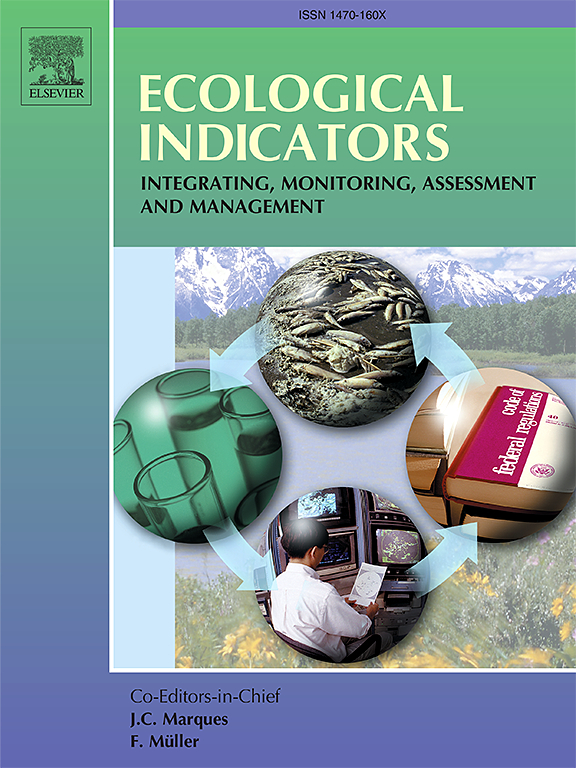Analyzing industry ecological sustainability from the perspective of spatial association network: A case study of the urban agglomeration in the middle reaches of the Yangtze River
IF 7
2区 环境科学与生态学
Q1 ENVIRONMENTAL SCIENCES
引用次数: 0
Abstract
As zones of intensive human activity overlap with ecologically sensitive areas, human-land conflict in urban agglomerations becomes more pronounced. This highlights the need to balance industrial development with ecological protection. This study constructs an industrial ecological sustainability (IES) index based on three subsystems: industrial development, resource-environment, and ecological protection. Using the Urban Agglomeration in the Middle Reaches of the Yangtze River (UAMRYR) as a case, we analyze the spatial–temporal patterns and spatial correlation network of IES, identifying the mechanisms driving these linkages. Firstly, from 2005 to 2020, the UAMRYR’s IES level showed a fluctuating upward trend, with spatial inequality manifesting as lower levels in the northwest and higher levels in the southeast. Leading areas of IES expanded from the southeast to the northwest, while lagging areas gradually decreased. Secondly, the spatial correlation network of IES in UAMRYR exhibits a “multi-polar and multi-thread” structure, driven mainly by intra-cluster linkages. The IES correlation intensity decreases as the distance from core cities increases. The network forms three types of blocks: bidirectional spillover, net beneficiary, and net spillover. The net beneficiary block is typically located in economically advanced areas that lead the network. Third, the spatial correlation network of IES is influenced by stable factors like geographical proximity and land use intensity differences and green innovation levels differences. It is also influenced by periodic factors such as economic development levels differences, urbanization rates differences, and energy consumption intensity differences.

求助全文
约1分钟内获得全文
求助全文
来源期刊

Ecological Indicators
环境科学-环境科学
CiteScore
11.80
自引率
8.70%
发文量
1163
审稿时长
78 days
期刊介绍:
The ultimate aim of Ecological Indicators is to integrate the monitoring and assessment of ecological and environmental indicators with management practices. The journal provides a forum for the discussion of the applied scientific development and review of traditional indicator approaches as well as for theoretical, modelling and quantitative applications such as index development. Research into the following areas will be published.
• All aspects of ecological and environmental indicators and indices.
• New indicators, and new approaches and methods for indicator development, testing and use.
• Development and modelling of indices, e.g. application of indicator suites across multiple scales and resources.
• Analysis and research of resource, system- and scale-specific indicators.
• Methods for integration of social and other valuation metrics for the production of scientifically rigorous and politically-relevant assessments using indicator-based monitoring and assessment programs.
• How research indicators can be transformed into direct application for management purposes.
• Broader assessment objectives and methods, e.g. biodiversity, biological integrity, and sustainability, through the use of indicators.
• Resource-specific indicators such as landscape, agroecosystems, forests, wetlands, etc.
 求助内容:
求助内容: 应助结果提醒方式:
应助结果提醒方式:


